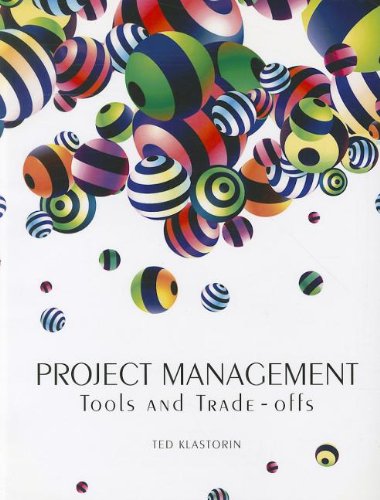4. Wilden Wooley has decided to build a new garage attached to his home. Since his budget...
Question:
4. Wilden Wooley has decided to build a new garage attached to his home. Since his budget is limited, he has decided to work as his own contractor and hire individual workmen as needed. Wilden wants to know how long the whole project will take;
more important (given the state of his finances), he wants to know what the garage will cost. In addition, the architect he wants to use is leaving town for an extended trip in a month; thus, Wilden wants to make sure that all jobs that must be done by the architect are completed before he leaves.
After talking to several fiends who have completed similar projects, Wilden begins planning for the new garage. He identifies the two major end products comprising the first level of the WBS as:
the garage project management Having identified these two end products, Wilden is able to identify three major tasks that have to be completed:
w legal issues resolution architectural analysis construction Wilden estimates that some parts of the first two tasks could be done concurrently, but that construction cannot begin until the first two tasks are in fact completed.
Wilden decides that the first task (legal issues resolution) really consist of two individual subtasks: 1.1.1 checking zoning regulations, and 1.1.2 getting the necessary building permits. The architectural analysis is also subdivided into two subtasks:
1.2.1 initial architectural consultation and drawings, and 1.2.2 final blueprints.
Finally, the construction of the garage itself can be subdivided into three subtasks:
1.3.1 foundation construction, 1.3.2 structure erection, and 1.3.3 electrical work.
After talking to the architect, Wilden discovers that a zoning variance might be needed for the garage since he proposes to build it directly next to his property line.
Thus, Wilden realizes that getting a zoning variance might add another subtask 1.1.3 under the first task (legal issues resolution). However, since there is some uncertainty about whether a zoning variance is needed, Wilden decides to construct two WBSs and plan for both contingencies.
Figure 2.24 shows the second WBS that Wilden constructed, assuming that a zoning variance is needed. Since he is concerned about allocating both his and the architect's time, Wilden divided the subtask entitled zoning variance into three work packages: (1.1.3.1) get appropriate drawings and zoning variance application,
(1.1.3.2) wait for response, and (1.1.3.3) pick up variance. Three work packages were defined since the architect was needed only to do the drawings and complete the application; no one would be needed during the wait, but no work could begin during this time; and Wilden would be needed to travel downtown and pick up the zoning variance when it was issued.
How would you modify Wilden Wooley's WBS for his new garage if the city authorities required him to consult with a structural engineer before a building permit would be issued? How would you modify the WBS if the zoning authorities required him to get the approval of his neighbor before the zoning variance would be issued?
Step by Step Answer:






